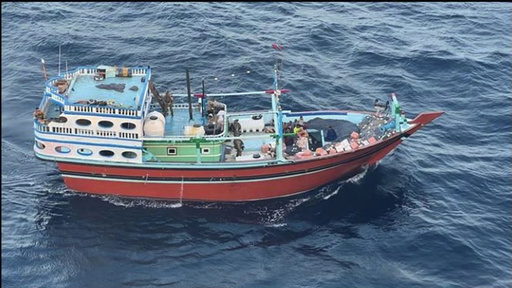WASHINGTON — A military investigation has revealed that the tragic drownings of two U.S. Navy SEALs while attempting to board a ship carrying illicit Iranian-made weapons could have been avoided due to significant training shortcomings and insufficient knowledge about managing emergencies in turbulent waters. The incident involved Chief Special Warfare Operator Christopher J. Chambers and Navy Special Warfare Operator 1st Class Nathan Gage Ingram, who both perished in January off the coast of Somalia.
The inquiry concluded that both operators quickly succumbed to the deep, rough seas while burdened by heavy gear. The SEALs were reportedly unaware that their flotation devices would be inadequate given the extra weight they were carrying, leading to their tragic loss at sea.
The detailed and heavily censored report, which was prepared by a Navy officer from outside the Naval Special Warfare Command, identified critical flaws in training, policies, tactics, and procedures, as well as inconsistent guidance on the proper use of emergency flotation devices. The report highlighted that these deficiencies created confusion over how to effectively use equipment that could have saved their lives.
The mission aimed to intercept weapons meant for the Iranian-aligned Houthis in Yemen, who have escalated missile and drone attacks against commercial vessels and U.S. Navy ships in the region since last year amidst heightened conflict involving Israel. Despite retaliatory strikes from U.S. forces, the assaults from the Houthis have continued unabated.
Chambers and Ingram, tasked with boarding an unflagged vessel during a nighttime operation, faced a perilous situation when Chambers fell while attempting to climb onto the deck of the boat. Ingram courageously leaped into the water to assist him. Rear Adm. Michael DeVore’s report noted the SEALs were overwhelmed by the weight of their gear, which rendered their flotation devices ineffective in keeping them above water.
The report documented that, after falling into the sea, Chambers was momentarily visible for 26 seconds and Ingram for approximately 32 seconds. In just 47 seconds, both men tragically succumbed to the sea’s depths.
Properly functioning flotation equipment could have kept them afloat until they were rescued, the report asserts. It found that while the team members were aware of the tactical flotation systems, most had little practical training with them, leading to inadequate preparation on how to properly use and adjust the equipment.
The environmental conditions during the operation were challenging, with waves measured at 6 to 8 feet. As instability increased, Chambers attempted to leap from the engine compartment of his craft to the ship’s rail but fell into the water instead. Although he initially managed to grab hold of a ladder, he was quickly pulled under by the sea.
Ingram’s brave attempt to save his teammate was met with sequential waves that thwarted his efforts, despite both men initially being able to grasp a submerged ladder extension. Ingram later appeared to attempt to deploy his flotation device and reduce his heavy equipment load before slipping beneath the waves—never to resurface again.
Team members expressed disbelief that Chambers, known for his superior swimming abilities, could not remain afloat. The report suggested that unclear guidance regarding flotation device usage might have led to grave errors in buoyancy configuration.
Although the SEALs followed standard procedures promptly after the incident, the search for their remains was called off after 10 days due to the depth of the water and slim chances of recovery. The Navy offered respect for their remains, acknowledging the sea as their final resting place.
Chambers, aged 37, had enlisted in the Navy in 2012 and completed SEAL training in 2014. Ingram, 27, joined in 2019 and finished training in 2021.
Following the investigation’s findings, Naval Special Warfare Command stated that training protocols and operational guidance are being revised. This includes establishing new policies focused on water safety, refining man-overboard procedures, and reviewing the procedures for maintaining flotation devices.
Rear Adm. Keith Davids, who led the command during the mission, expressed commitment to implementing the necessary changes learned from this sorrowful incident. The investigation recommends that Ingram be posthumously recognized for his heroism while trying to save his fellow SEAL.
In a related report from the Defense Intelligence Agency, the mission on January 11 resulted in the seizure of key Iranian missile technology intended for the Houthis, including propulsion systems and warheads for advanced weaponry.
